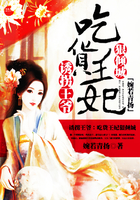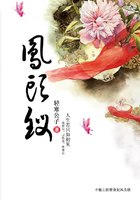In the afternoon of that first seeing day, I should take a long walk in the woods and intoxicate my eyes on the beauties of the world of Nature, trying desperately to absorb in a few hours the vast splendor which is constantly unfolding itself to those who can see. On the way home from my woodland jaunt my path would lie near a farm so that I might see the patient horses ploughing in the field(perhaps I should see only a tractor!) and the serene content of men living close to the soil. And I should pray for the glory of a colorful sunset.
When dusk had fallen, I should experience the double delight of being able to see by artificial light which the genius of man has created to extend the power of his sight when Nature decrees darkness.
In the night of that first day of sight, I should not be able to sleep, so full would be my mind of the memories of the day.
The Second Day
The next day—the second day of sight—I should arise with the dawn and see the thrilling miracle by which night is transformed into day. I should behold with awe the magnificent panorama of light with which the sun awakens the sleeping earth.
This day I should devote to a hasty glimpse of the world, past and present. I should want to see the pageant of man’s progress, the kaleidoscope of the ages. How can so much be compressed into one day? Through the museums, of course. Often I have visited the New York Museum of Natural History to touch with my hands many of the objects there exhibited, but I have longed to see with my eyes the condensed history of the earth and its inhabitants displayed there animals and the races of men pictured in their native environment; gigantic carcasses of dinosaurs and mastodons which roamed the earth long before man appeared, with his tiny stature and powerful brain, to conquer the animal kingdom; realistic presentations of the processes of development in animals, in man, and in the implements which man has used to fashion for himself a secure home on this planet; and a thousand and one other aspects of natural history.
I wonder how many readers of this article have viewed this panorama of the face of living things as pictured in that inspiring museum. Many, of course, have not had the opportunity, but I am sure that many who have had the opportunity have not made use of it. There, indeed, is a place to use your eyes. You who see can spend many fruitful days there, but I with my imaginary three days of sight, could only take a hasty glimpse, and pass on.
My next stop would be the Metropolitan Museum of Art, for just as the Museum of Natural History reveals the material aspects of the world, so does the Metropolitan show the myriad facets of the human spirit. Throughout the history of humanity the urge to artistic expression has been almost as powerful as the urge for food, shelter, and procreation. And here, in the vast chambers of the Metropolitan Museum, is unfolded before me the spirit of Egypt, Greece, and Rome, as expressed in their art. I know well through my hands the sculptured gods and goddesses of the ancient Nile-land. I have felt copies of Parthenon friezes, and I have sensed the rhythmic beauty of charging Athenian warriors. Apollos and Venuses and the Winged Victory of Samothrace are friends of my finger tips. The gnarled bearded features of Homer are dear to me, for he, too, knew blindness.
My hands have lingered upon the living marble of roman sculpture as well as that of later generations. I have passed my hands over a plaster cast of Michelangelo’s inspiring and heroic Moses; I have sensed the power of Rodin; I have been awed by the devoted spirit of Gothic wood carving. These arts which can be touched have meaning for me, but even they were meant to be seen rather than felt, and I can only guess at the beauty which remains hidden from me. I can admire the simple lines of a Greek vase, but its figured decorations are lost to me.
So on this, my second day of sight, I should try to probe into the soul of man through this art. The things I knew through touch I should now see. More splendid still, the whole magnificent world of painting would be opened to me, from the Italian Primitives, with their serene religious devotion, to the Moderns, with their feverish visions. I should look deep into the canvases of Raphael, Leonardo Da Vinci, Titian, Rembrandt. I should want to feast my eyes upon the warm colors of Veronese, study the mysteries of E1 Greco, catch a new vision of Nature from Corot. Oh, there is so much rich meaning and beauty in the art of the ages for you who have eyes to see!
Upon my short visit to this temple of art I should not be able to review a fraction of that great world of art which is open to you. I should be able to get only a superficial impression. Artists tell me that for deep and true appreciation of art one must educated the eye. One must learn through experience to weigh the merits of line, of composition, of form and color. If I had eyes, how happily would I embark upon so fascinating a study! Yet I am told that, to many of you who have eyes to see, the world of art is a dark night, unexplored and unilluminated. It would be with extreme reluctance that I should leave the Metropolitan Museum, which contains the key to beauty—a beauty so neglected. Seeing persons, however, do not need a metropolitan to find this key to beauty. The same key lies waiting in smaller museums, and in books on the shelves of even small libraries. But naturally, in my limited time of imaginary sight, I should choose the place where the key unlocks the greatest treasures in the shortest time.















